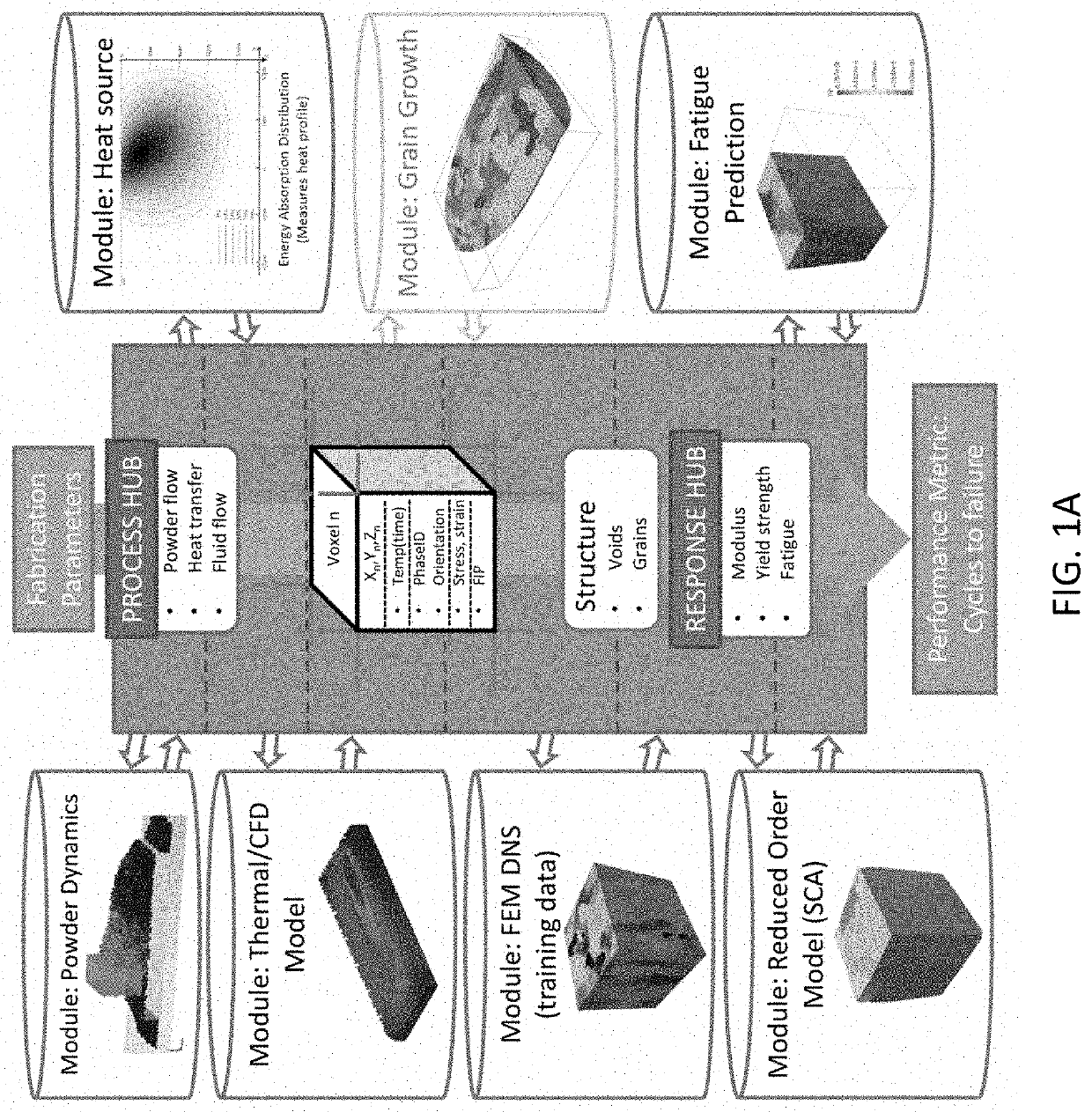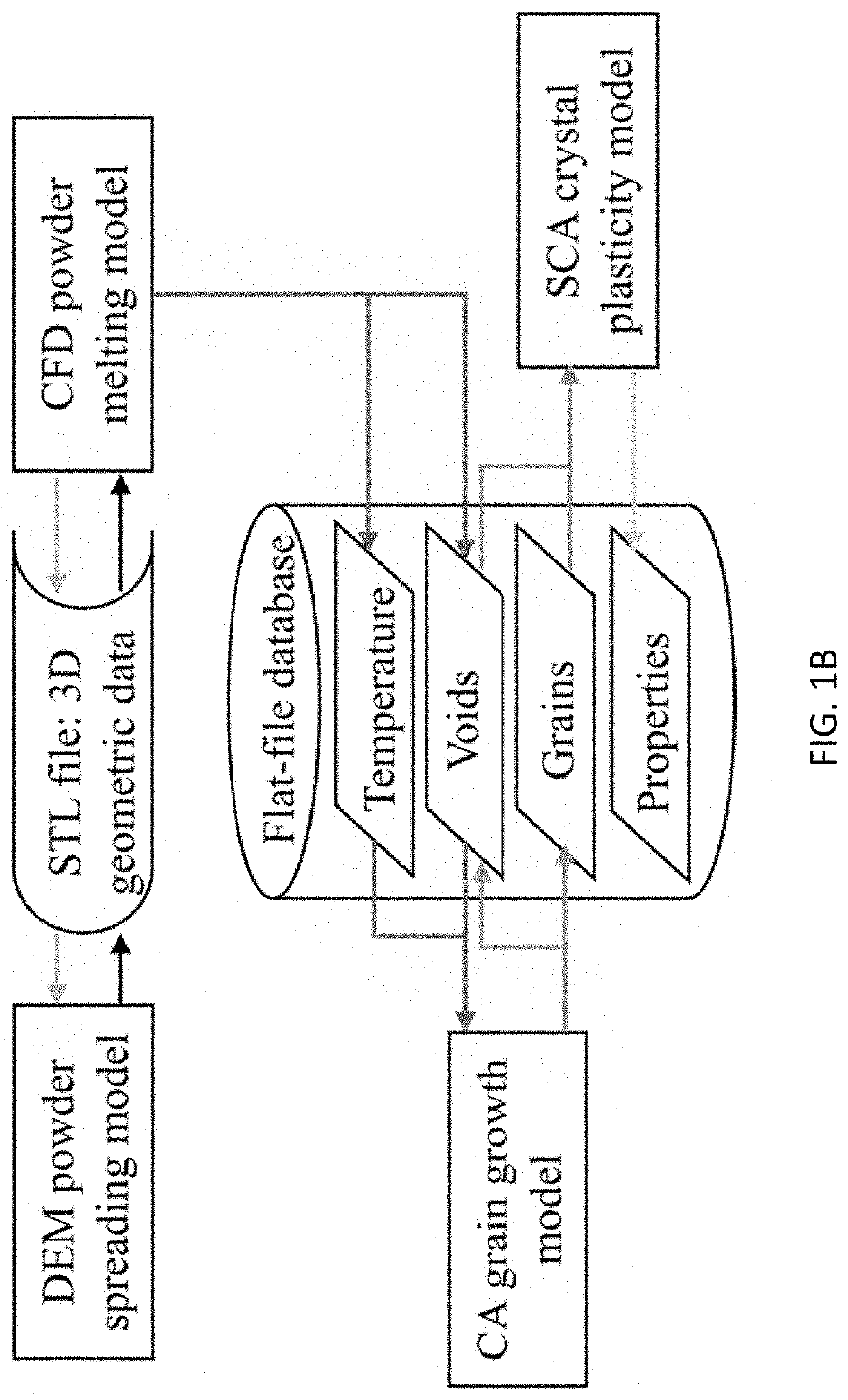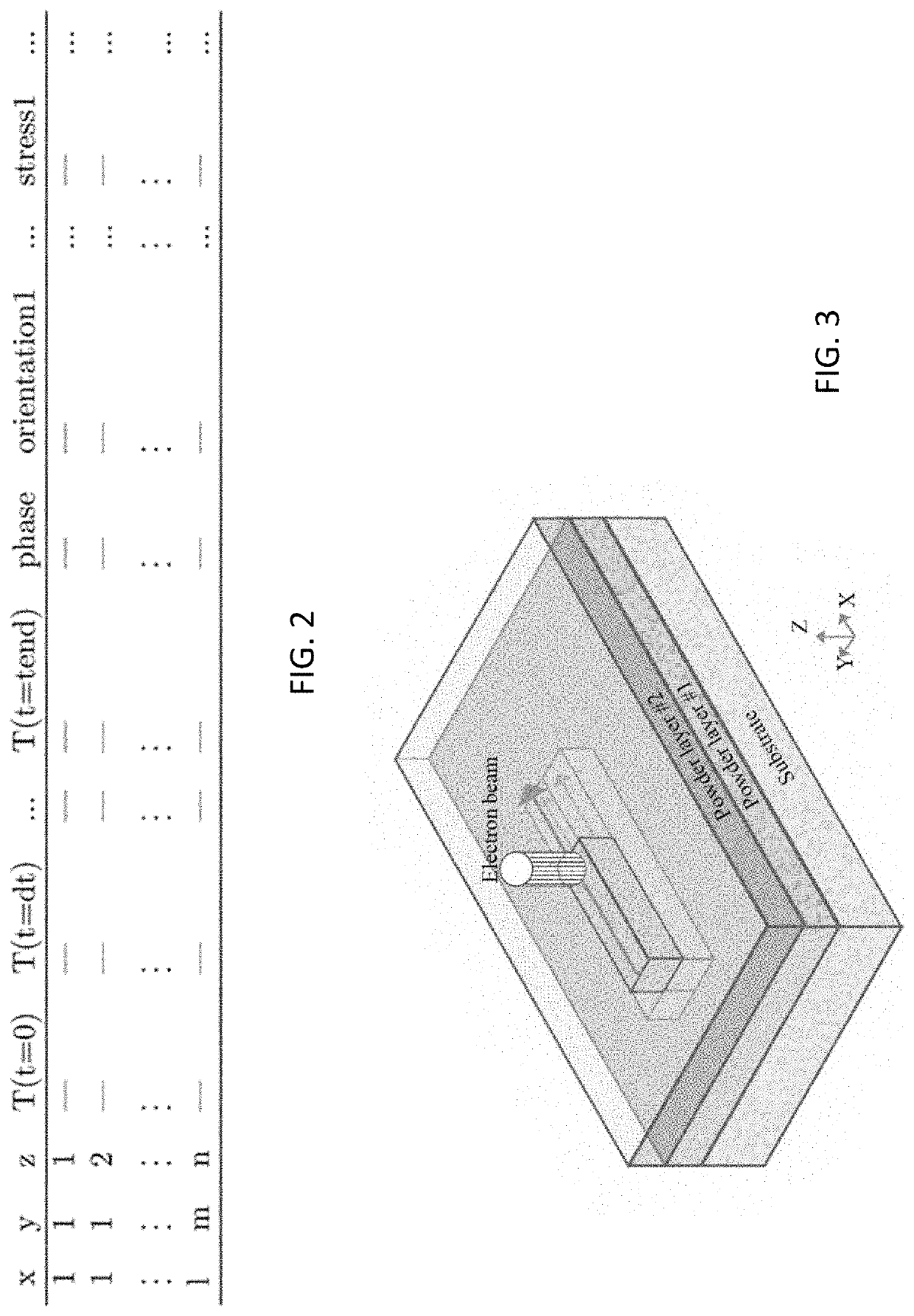Integrated process-structure-property modeling frameworks and methods for design optimization and/or performance prediction of material systems and applications of same
- Summary
- Abstract
- Description
- Claims
- Application Information
AI Technical Summary
Benefits of technology
Problems solved by technology
Method used
Image
Examples
example 1
Integrated Process-Structure-Property Modeling Framework for Additive Manufacturing
[0149]One objective of modeling for Additive Manufacturing (AM) is to predict the resultant mechanical properties from given manufacturing parameters and intrinsic material properties, thereby reducing uncertainty in the material built. This can dramatically reduce the time and cost for the development of new products using AM. In this exemplary study, we realize the seamless linking of models for the manufacturing process, material structure formation, and mechanical response through an integrated multi-physics modeling framework. The sequentially coupled modeling framework relies on the concept that the results from each model used in the framework are contained in space-filling volume elements using a prescribed structure. The implementation of the framework demonstrated herein includes: (1) a powder spreading model using the discrete element method (DEM) to generate the powder bed and a thermal-fl...
example results
and Discussion
[0189]The final result of this integrated framework is the computed performance metric. Here we also present intermediate results from each of the models described above, to make the flow of information between modules and hubs within the framework much clearer by example. Each of the modules contains a state-of-the-art method in itself; the important point that we demonstrate, to our knowledge for the first time in the open literature, is that the modules used to predict processing and material response to mechanical loading during service have been directly linked. A comparison of the final metric for build quality between cases with different processing conditions is made. The examples here show the influence of process parameter choices on simulated performance with two distinct cases shown in Table 1-3: one with hatch spacing 200 μm and the other with hatch spacing 240 μm. This allows us to directly show the differences in that result from different process parame...
example 2
Implementation and Application of the Multiresolution Continuum Theory
[0211]The multiresolution continuum theory (MCT) is implemented in FEA with a bespoke user defined element and materials. In this exemplary study, we focus on the formulation and implementation of the MCT model. A simple dog-bone model is used to validate the code and study the effect of microscale parameters. The ability of the MCT method to simulate the propagation of a shear band in simple shear geometry is shown. The length scale parameter is demonstrated to influence shear band width. Finally, we present a simulation of serrated chip formation in metal cutting, a case where accurate prediction of shear band formation is critical. The advantages of the MCT over conventional methods are discussed. This work helps elucidate the role of the length scale and microscale parameters in the MCT, and is a demonstration of a practical engineering application of the method: the simulation of high speed metal cutting (HSM...
PUM
 Login to View More
Login to View More Abstract
Description
Claims
Application Information
 Login to View More
Login to View More - R&D
- Intellectual Property
- Life Sciences
- Materials
- Tech Scout
- Unparalleled Data Quality
- Higher Quality Content
- 60% Fewer Hallucinations
Browse by: Latest US Patents, China's latest patents, Technical Efficacy Thesaurus, Application Domain, Technology Topic, Popular Technical Reports.
© 2025 PatSnap. All rights reserved.Legal|Privacy policy|Modern Slavery Act Transparency Statement|Sitemap|About US| Contact US: help@patsnap.com



